#FutureAi
Text
Rajkot's Digital Hub | Kalavid's Spectacular Billboard for First IT Park!
Introducing ' Rajkot Ka Pehla 𝐈𝐓 𝐏𝐀𝐑𝐊, designed to spark FOMO and intrigue.
So Join us to be the part of this creative branding community. 𝐋𝐞𝐭'𝐬 𝐢𝐧𝐧𝐨𝐯𝐚𝐭𝐞 𝐭𝐨𝐠𝐞𝐭𝐡𝐞𝐫!
𝐂𝐫𝐞𝐚𝐭𝐞𝐝 𝐛𝐲: "𝐊𝐚𝐥𝐚𝐯𝐢𝐝 - 𝐀 𝐂𝐨𝐦𝐩𝐥𝐞𝐭𝐞 𝐃𝐞𝐬𝐢𝐠𝐧 𝐒𝐭𝐮𝐝𝐢𝐨"
Contact Us:- 9824221002
Facebook: https://www.facebook.com/kalaviddesignstudio
Instagram: https://www.instagram.com/kalavid_branding/
Website: www.kalavid.net



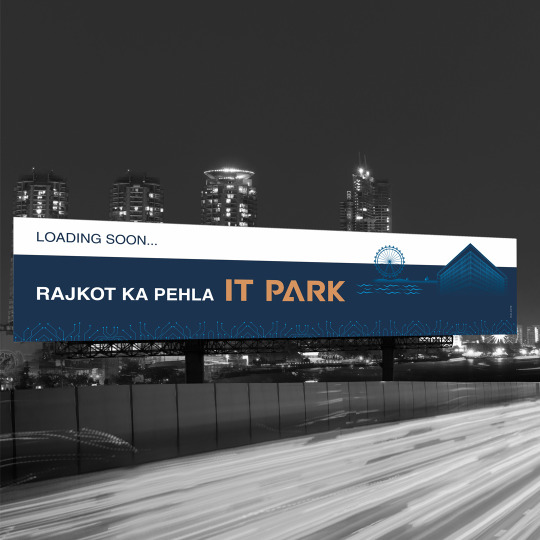




#kalavid#branding#siliconvalley#itpark#itindustry#techie#softwareengineer#programmerlife#developerlife#AiIsFuture#FutureAi#InformationTechnology#ITService#TechInnovation#outdoorbranding#siteboards#hoardings#boards#billboard#brandingagency#creativedesign#brandingstudio#kiosks#kioskdesign#1brandingagency#1marketingagency#brandingagencyinrajkot#360degrees#rajkot#completing24years
2 notes
·
View notes
Text
A Comprehensive Comparison of Generative AI vs Predictive AI Technologies
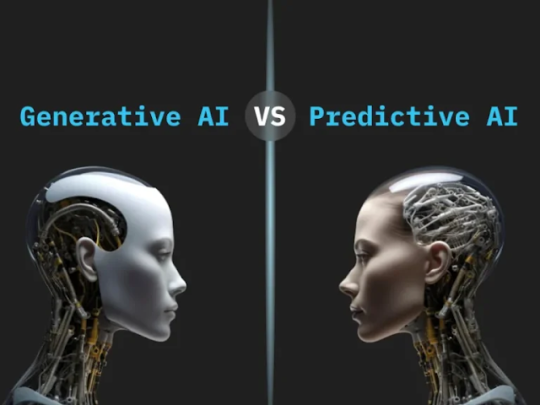
Discover the ultimate guide to "A Comprehensive Comparison of Generative AI vs Predictive AI Technologies." Unravel the intricacies of these AI paradigms, exploring their differences, applications, and implications. Gain a nuanced understanding of Generative AI vs Predictive AI and their respective roles in shaping the future of technology.
#GenerativeAIvsPredictiveAI#FutureAI#GenerativeAI#PredictiveAI#AIUnderstanding#GenerativeAIDevelopmentCompany
0 notes
Text
What's the Buzzword ChatGPT all about?
GPT, which stands for Generative Pre-trained Transformer, is a type of artificial intelligence (AI) that is trained to generate human-like text. It can be used for a variety of tasks, including language translation, question answering, and generating responses to prompts in a conversation.
GPT works by using machine learning techniques to analyze and learn from large amounts of text data. It uses this learning to predict the most likely next word or phrase in a given context, which allows it to generate text that sounds natural to a human reader.
One way GPT is used is in chatbots, which are programs that can carry on a conversation with a human user through a chat interface. A chatbot using GPT can generate responses to user input, allowing it to have a conversation with the user.
GPT is a type of AI model known as a transformer. It's called "generative" because it can generate new text based on the input it receives. It's called "pre-trained" because it is trained on a large dataset before it is fine-tuned for a specific task.

The training process for GPT involves feeding it a large amount of text data, such as books, articles, and conversations. It uses this data to learn about the structure and patterns of human language. It does this by analyzing the words that tend to appear together and the context in which they are used.
Once it has been trained, GPT can use this knowledge to generate text that sounds natural to a human reader. It does this by predicting the most likely next word or phrase based on the context of the previous words in the text.
For example, if you give GPT the prompt "The cat sat on the mat" and ask it to complete the sentence, it might generate the response "and groomed itself." This is because it has learned that cats often groom themselves, and that "groomed" is a common verb to follow "sat."
PS: The blog is written by ChatGPT itself ;)
#chatgpt#chatbots#bot#Aibot#artificalintelligence#FutureAi#technology#powerfulltool#GPT#ChatGPT#buzzwords#Aimodel
1 note
·
View note
Text
Hi there. OOC post because I feel that it's important.
I'm sure some people might have already seen it, but a blog called FutureAI or some shit recently blazed a post about an AI program for composing poems and song lyrics.
AI programs like these put people like me out of jobs. I am a poet and composer by trade, and have studied English for years. The people who create and use these programs feed their machines the content that I and creators like me pour our entire livelihoods into so that they can mass-produce the soert of work that takes human beings hours to create.
If you see posts from users trying to boost AI programs, please do not like them or reblog them. Simply block the creator and go on with your day. It's important that posts like the one that was blazed to me today don't get a lot of traction, because every visit to their sites stokes the flames.
I know most people on Tumblr already have pretty negative views on ai in terms of art theft, but the literary and music communities can often tend to go unnoticed, especially given the way that courts tend not to take up man plagiarism and copyright cases in music since copying others' work is just so difficult to prove.
7 notes
·
View notes
Text
#AI enthusiasts, let's imagine the possibilities together! 🚀 How do you envision AI enhancing our future? Share your innovative ideas and let's shape a tomorrow full of possibilities! #FutureAI #Innovation #TechTuesday
0 notes
Text
Neuralink's First Human Implant
Neuralink's First Human Implant
A Leap Towards Human-AI Symbiosis
@neosciencehub
#neosciencehub #science #Neuralink #Human #AISymbiosis #BrainComputer #Interface #Neurotechnology #elonmusk #AI #brainchip #FutureAI #MedicalTechnology #DataSecurity #NSH
A Leap Towards Human-AI Symbiosis
In a landmark achievement that could redefine the boundaries of human potential and technology, Neuralink, the neurotechnology company co-founded by entrepreneur Elon Musk, has successfully implanted its pioneering brain-computer interface in a human subject. This outstanding development in BCI (Brain Computer Interface) not only marks a significant milestone in…

View On WordPress
#AI Integration#Assistive Technology#Brain-Computer Interface#Cognitive Enhancement#Data Security#Digital Health#Elon Musk#Ethics in AI#featured#Future of AI#Human-AI Symbiosis#Human-Computer Interaction#Medical Technology#Neuralink#Neurological Disorders#Neuroscience#Neurotechnology#sciencenews
0 notes
Text
AI Misconceptions Exposed! The Shocking Truth Reveal

AI misconceptions are on the rise! Artificial intelligence (AI) is one of the most exciting and influential technologies of our time. It has the potential to transform various aspects of our lives, from healthcare to education, from business to entertainment. However, AI is also a source of many misconceptions, myths, and fears. Some people think that AI is dangerous, unexplainable, biased, or useless. Others think that AI is a magic bullet that will solve all of our problems or a science fiction technology that is not yet relevant to the present day.
In this article, we will debunk 8 common AI misconceptions and explain the reality behind them. We will also provide some sources and references that you can use to learn more about AI and its applications. Our goal is to help you understand what AI is, what it can and cannot do, and how it can benefit you and society.
Key Takeaways
AI MisconceptionsReality and TruthAI is dangerousAI is not dangerous, but it can pose some risks and challenges that need to be addressed with ethical and responsible practices.AI is a black box and unexplainableAI is not a black box or unexplainable, but a complex and evolving technology that can be made more transparent and accountable.AI will take our jobsAI will not take our jobs, but change the nature of work and create new opportunities and challenges for workers and employers.AI is biasedAI is not biased or unfair, but a complex and dynamic technology that can be made more fair and unbiased.AI is only for large companies and governmentsAI is not only for large companies and governments, but a accessible and useful technology for small businesses and individuals.AI is a science fiction technologyAI is not a science fiction technology, but a present and future technology that is already capable and impactful.AI is uselessAI is not useless or unimportant, but a valuable and beneficial technology that can be used for various purposes and goals.AI is the futureAI is not the future, but a part of the future. AI will not replace humans, but augment and complement human intelligence and capabilities.
Introduction
What is AI?
AI stands for artificial intelligence, which is the science and engineering of creating machines and systems that can perform tasks that normally require human intelligence, such as reasoning, learning, decision-making, perception, and natural language processing. AI is not a single technology, but a broad field that encompasses many subfields, such as machine learning, computer vision, natural language processing, speech recognition, robotics, and more.
Why are AI misconceptions common?
AI misconceptions are common because AI is a complex and evolving technology. Media, popular culture, and public opinion often misrepresent AI. Some of the reasons why AI misconceptions are common are:
- AI is often confused with other related terms, such as artificial neural networks, deep learning, big data, and data science.
- AI is often influenced by science fiction and fantasy, which depict AI as either a benevolent or malevolent force that can surpass or threaten human intelligence and existence.
- AI is often subject to hype and exaggeration, which create unrealistic expectations or fears about its capabilities and impacts.
- AI is often affected by bias and ignorance, which lead to false or inaccurate assumptions or judgments about its nature and behavior.
The most common AI misconceptions
In this article, we will address 8 of the most common AI misconceptions and explain why they are wrong or misleading. We will also provide some facts and evidence that support the reality and truth behind AI. These 8 AI misconceptions are:
- AI is dangerous
- AI is a black box and unexplainable
- AI will take our jobs
- AI is biased
- AI is only for large companies and governments
- AI is a science fiction technology
- AI is useless
- AI is the future
Let’s dive into each of these AI misconceptions and debunk them one by one.
AI Misconception 1: AI is dangerous

One of the most common and persistent AI misconceptions is that AI is dangerous and poses a threat to humanity. Some of the fears and worries that people have about AI are:
- AI will take over the world and dominate or destroy humans
- AI will become sentient and harm humans out of malice or indifference
- AI will create autonomous weapons that can kill without human intervention or control
- Malicious actors will use AI to develop new forms of cybercrime and warfare
- AI robots will enslave humans in a dystopian future
These fears and worries are largely based on sensationalized and exaggerated scenarios that are often depicted in science fiction and popular culture. However, the reality and truth behind AI are quite different. Here are some facts and evidence that debunk this AI misconception:
AI is not Dangerous
- AI is not a single entity or agent that has a will or goal of its own. It is a collection of diverse and specialized technologies and systems designed and controlled by humans for specific purposes and tasks.
- AI is not sentient or conscious, but a simulation of intelligence that is based on data, algorithms, and rules. AI does not have emotions, feelings, or intentions, and cannot understand or care about human values, morals, or ethics.
- AI is not autonomous or independent, but dependent and reliant on human input, guidance, and oversight. AI cannot operate or function without human data, instructions, feedback, and supervision.
- AI is not inherently good or evil. It is a tool that can be used for various ends and means. AI can have positive or negative impacts depending on how it is developed, deployed, and used by humans. AI can be used for good causes, such as improving healthcare, education, and the environment, or for evil causes, such as harming people, violating privacy, and spreading misinformation.
- AI is not inevitable or unstoppable, but a choice and a responsibility. AI can be regulated, governed, and managed by humans to ensure that it is aligned with human values, interests, and goals. AI can be subject to ethical and legal standards, norms, and principles that can prevent or mitigate its potential harms and risks.
Therefore, AI is not dangerous, but it can pose some challenges and issues that need to be addressed with ethical and responsible practices. AI can be beneficial and helpful for humanity if it is used wisely and ethically.
AI Misconception 2: AI is a black box and unexplainable
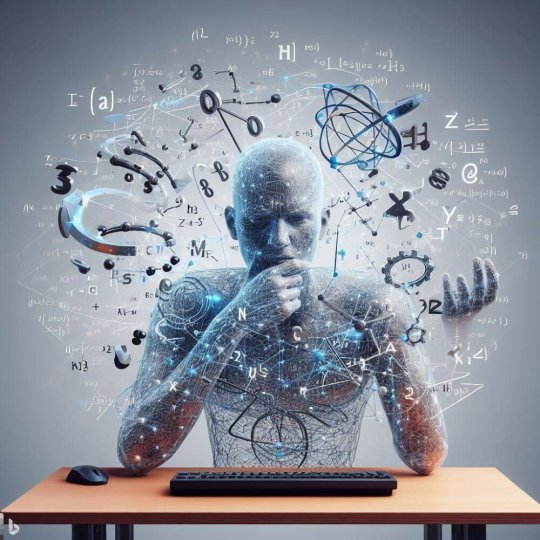
Another common AI misconception is that AI is a black box and unexplainable. AI systems are too complex to understand. And AI decisions are made without human oversight or accountability. Some of the concerns and doubts that people have about AI are:
- AI systems are based on complicated and obscure algorithms that cannot be understood by humans
- AI decisions are made by AI systems without any human input, explanation, or justification
- AI algorithms are opaque and cannot be audited, verified, or challenged by humans
- AI is a mystery that is beyond human comprehension and control
These concerns and doubts are partly based on the fact that some AI systems, especially those based on deep learning and neural networks, can be very complex and difficult to interpret and explain. However, the reality and truth behind AI are quite different. Here are some facts and evidence that debunk this AI misconception:
AI is not a Blackbox
- AI systems are not incomprehensible or inscrutable. Humans can analyze and understand them using various methods and tools. There are techniques and frameworks to make AI more transparent and explainable, such as feature importance, saliency maps, attention mechanisms, counterfactuals, and more.
- AI systems don't make decisions alone. Humans typically collaborate with AI systems. There are processes and standards to ensure human involvement, oversight, and accountability in AI decision-making, such as human-in-the-loop, human-on-the-loop, and human-in-command.
- AI algorithms are not difficult to access. Humans can audit, verify, and challenge them using various methods and tools. There are mechanisms and platforms to ensure the quality, reliability, and validity of AI algorithms, such as testing, validation, verification, certification, and more.
- AI is not mysterious or miraculous. Scientists and engineers learn and master AI through various sources. There are many resources and opportunities to learn and understand AI, such as courses, books, blogs, podcasts, videos, and more.
Therefore, AI is not a black box or unexplainable. It is a complex and evolving technology with the possibility of transparency and accountability. Humans can understand and control AI and can control its development, deployment, and usage.
AI Misconception 3: AI will take our jobs
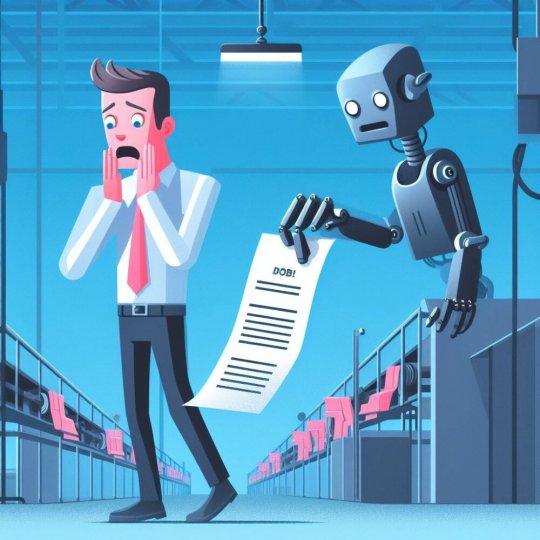
Another common AI misconception is that AI will take our jobs and make humans obsolete. Some of the fears and anxieties that people have about AI are:
- AI will automate all tasks and activities that humans perform, from simple to complex, from routine to creative
- AI will create a mass unemployment crisis and leave millions of people without income or livelihood
- AI will lead to a new social class divide between those who own and control AI and those who do not
- AI will make our lives meaningless and purposeless, as we will have nothing to do or contribute
These fears and anxieties are partly based on the fact that AI can perform many tasks and activities faster, cheaper, and better than humans and that AI can learn and improve from data and experience. However, the reality and truth behind AI are quite different. Here are some facts and evidence that debunk this AI misconception:
AI will Enhance Our Jobs
- AI will not automate all tasks and activities, but only some of them, mostly those that are repetitive, tedious, or dangerous. AI will also create new tasks and activities that require human skills, such as creativity, empathy, and collaboration.
- AI will not create a mass unemployment crisis, but a shift in the nature and structure of work and employment. AI will also create new jobs and opportunities that require human skills, such as data analysis, AI development, and AI management.
- AI will not lead to a new social class divide, but a need for a new social and economic system that can ensure the fair and equitable distribution of AI benefits and costs. AI will also require a new social and ethical framework that can protect and promote human rights and values.
- AI will not make our lives meaningless and purposeless, but a chance for us to redefine and enhance our roles and contributions in society. AI will also enable us to pursue our passions and interests and to improve our well-being and happiness.
Therefore, AI will not take our jobs, but change the nature of work and create new opportunities and challenges for workers and employers. AI can partner with human intellect to augment and complement their tasks.
AI Misconception 4: AI is biased
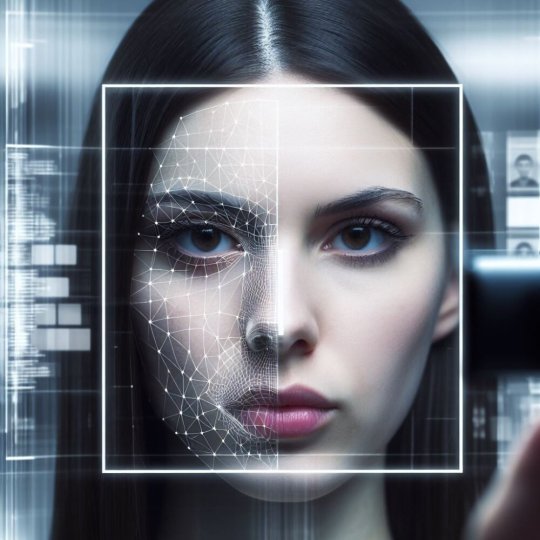
Another common AI misconception is bias and unfairness. AI systems are trained on data that reflects human biases. AI decisions can be discriminatory and unjust. Some of the issues and problems that people have about AI are:
- AI systems are based on data that contains human biases, such as racism, sexism, or ageism, that can affect the outcomes and performance of AI systems
- AI decisions can be unfair and discriminatory, such as denying loans, jobs, or services to certain groups of people based on their race, gender, or age
- AI could exacerbate existing social inequalities and injustices, such as widening the gap between the rich and the poor, the privileged and the marginalized, the powerful and the powerless
- AI is a tool that can be used for good or evil, and it is up to humans to ensure that it is used responsibly and ethically
The quality, quantity, and diversity of the data influence some AI systems. However, the reality and truth behind AI are quite different. Here are some facts and evidence that debunk this AI misconception:
AI can be Trained to be Unbiased
- Bias and unfairness are not inherent property of AI systems. The design of the AI system's training process ensures fairness and unbias. There are methods and tools to detect and correct AI bias, such as data preprocessing, algorithm debiasing, fairness metrics, and more.
- AI decisions are not arbitrary or unaccountable. There are techniques and frameworks to make AI more interpretable and understandable, such as feature importance, saliency maps, attention mechanisms, counterfactuals, and more.
- AI could reduce existing social inequalities and injustices, such as improving access to education, healthcare, and information, empowering marginalized and underrepresented groups, and promoting social good and justice. There are initiatives and projects that use AI for social good, such as AI for Good, AI for Social Good, and AI for Humanity.
- AI is a tool that can be used for both good and evil, depending on the intentions of the people who develop and use it. It can be used to improve healthcare, education, and the environment, or to harm people, violate privacy, and spread misinformation.
AI is complex and dynamic, not biased or unfair. It can be made fairer and more unbiased, and it can be beneficial and helpful for humanity if used ethically and responsibly.
AI Misconception 5: AI is only for large companies and governments

Another common AI misconception is that AI is only for large companies and governments. That means AI is too expensive and complex for small businesses and individuals. And that AI is not relevant or useful for everyday life. Some of the beliefs and opinions that people have about AI are:
- AI is a costly and sophisticated technology that requires a lot of resources, expertise, and infrastructure to develop and use
- AI is not applicable or beneficial for small businesses and individuals, as they do not have the need, access, or skills to use AI
- Powerful wealthy companies and governments control AI. They have the monopoly and influence over it
- AI is a distant and abstract technology that is not yet accessible or available to the average person
These beliefs and opinions are partly based on the fact that some AI systems, especially those that involve large-scale data processing and computation, can be very expensive and complex to develop and use, and that some AI applications, especially those that involve sensitive or critical domains, can be very exclusive and restricted to certain entities or organizations. However, the reality and truth behind AI are quite different. Here are some facts and evidence that debunk this AI misconception:
AI is for Everyone
- AI is a diverse and flexible technology. It requires the knowledge of various levels of resources, expertise, and infrastructure. It is not necessarily costly or sophisticated. There are many free and open-source AI tools and resources available, such as AI Paragraph Writer, AI Detector, and Free AI Essay Writer.
- AI is not inapplicable or unbeneficial for small businesses and individuals, but relevant and useful for various purposes and goals. AI can help small businesses and individuals to improve their productivity, efficiency, quality, and innovation, such as AI in Healthcare, AI and Self-Driving Cars, Best AI Tools for Small Businesses, and more.
- AI is a shared and collaborative technology developed and used by various entities and organizations. There are many initiatives and platforms that promote the democratization and decentralization of AI. An example of those are Open Source AI, AI for Good, Partnership on AI, and more.
- AI is not a distant or abstract technology. It is a present and tangible technology that is already accessible and available to the average person. Many aspects of our daily lives, such as smartphones, social media, online shopping, and entertainment, are already using AI.
Therefore, AI is not only for large companies and governments but an accessible and useful technology for small businesses and individuals. Everyone benefits from ethical and wise AI.
AI Misconception 6: AI is a science-fiction technology
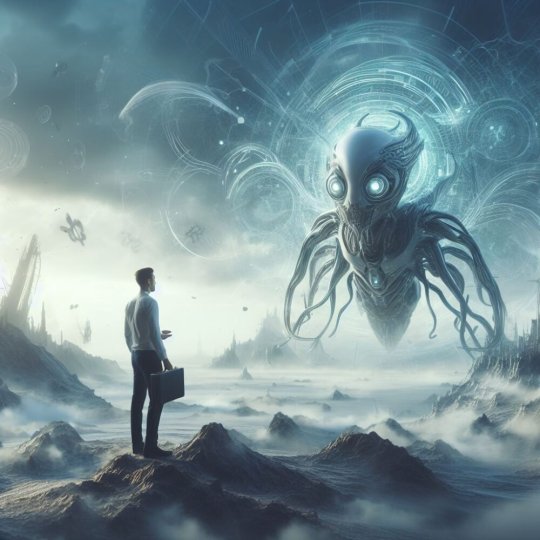
Another common AI misconception is that AI is a science-fiction technology. That means that AI is still in its early stages of development. And that AI is not yet capable of performing complex tasks like driving cars or writing novels.
Read the full article
0 notes
Text
Unlocking the Potential: The Future of AI in Software Development
Importance of AI in future #AI #futureAi #future
Introduction: Discover the immense potential of artificial intelligence (AI) in software development and its remarkable impact on various industries. This blog unravels the captivating world of AI and explores how it is shaping the future of software development.
Understanding AI-Driven Development: Explore the concept of AI-driven development, encompassing machine learning, natural language…
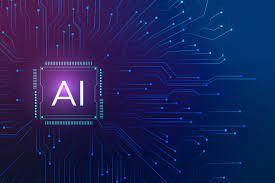
View On WordPress
0 notes
Photo

Sixth Artfight attack! This one is. Well. Very silly. But also took so much to make. I don’t do rooms often. Anyways, this is on @futureai, of his character Norman!
1 note
·
View note
Video
youtube
What do you think jack ma?
Humans or Machines?
when Elon musk said.
What you guys think😂
1 note
·
View note
Text
The danger of AI is weirder than you think - The danger of artificial intelligence isn’t that it’s going to rebel against us - Learn More...
0 notes
Video
Tokyo Researchers’ Dragon Drone Can Shape-shift on the Fly Researchers at the University of Tokyo’s JSK Lab have developed a modular flying drone capable of adapting its shape to suit its environment. It’s called DRAGON, which conveniently stands for Dual-rotor embedded multilink Robot with the Ability of multi-deGree-of-freedom aerial transformatiON. DRAGON is powered by ducted fans that can adapt on the fly to form whatever shape is required, shifting the drone from a square to a snake. The technology could be used to allow the drone to fly through small gaps before re-forming on the other side. . . . . #Robot #Robotics #robotworld #future #futureAi #Artificialintelligence #2018 #AI 2018 #robotDragon #drone #dragonfly #dragondrone #software #softwareengineering #ai #aisoftware
#aisoftware#ai#futureai#2018#robotworld#robotdragon#robot#drone#artificialintelligence#softwareengineering#dragondrone#future#dragonfly#robotics#software
0 notes
Photo

TalentSeer to Host AI Talent Summit on Building and Retaining Strong AI Teams for the FutureAI & Surroundings
0 notes
Photo
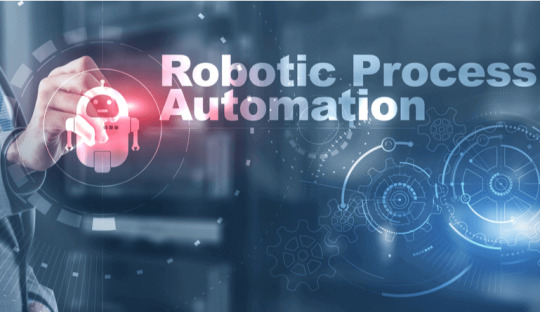
#Process #Automation#RPA stands for #Robotic Process Automation, A burgeoning technology which is capable of performing a Tangled, Monotonous, Tiresome, Rule-based actions without human intervention. https://scottline.com/rpa.html#RPA #CVS #DataPreparation # #FutureAI
1 note
·
View note
Text
Here is my new blog about future upcoming Artificial Intelligence!
1 note
·
View note